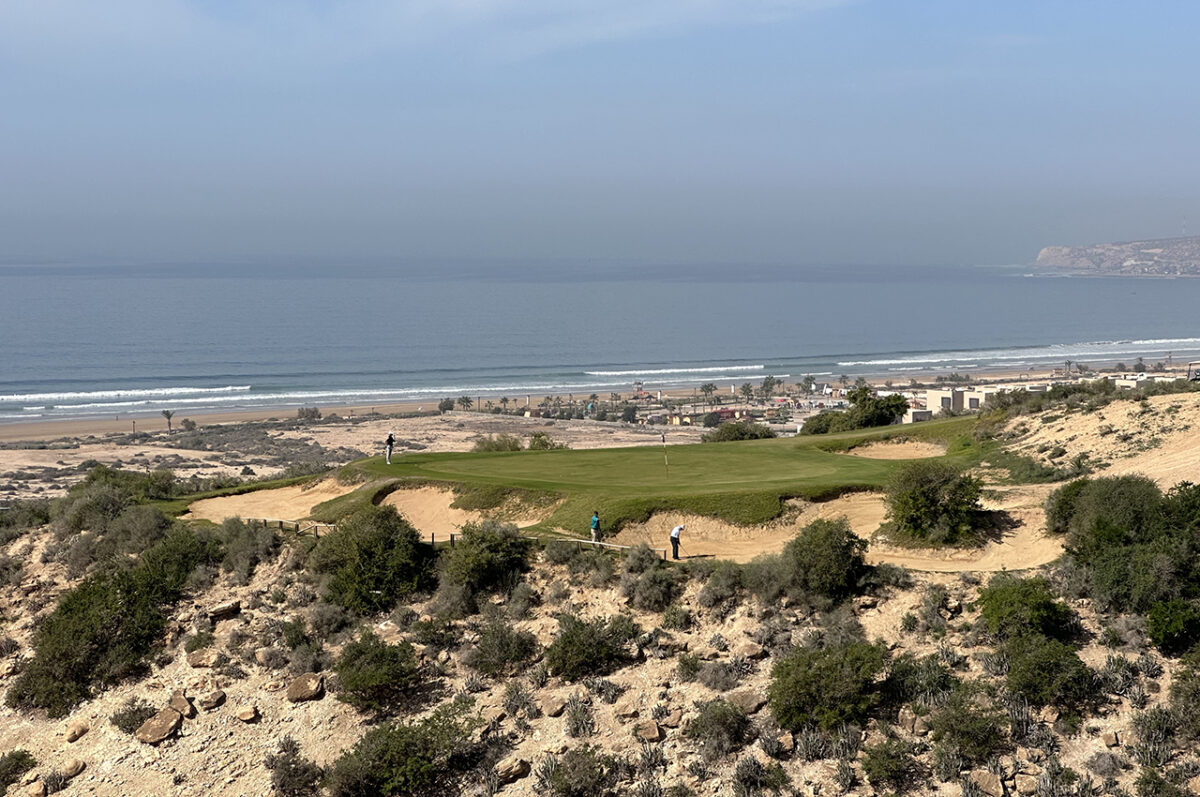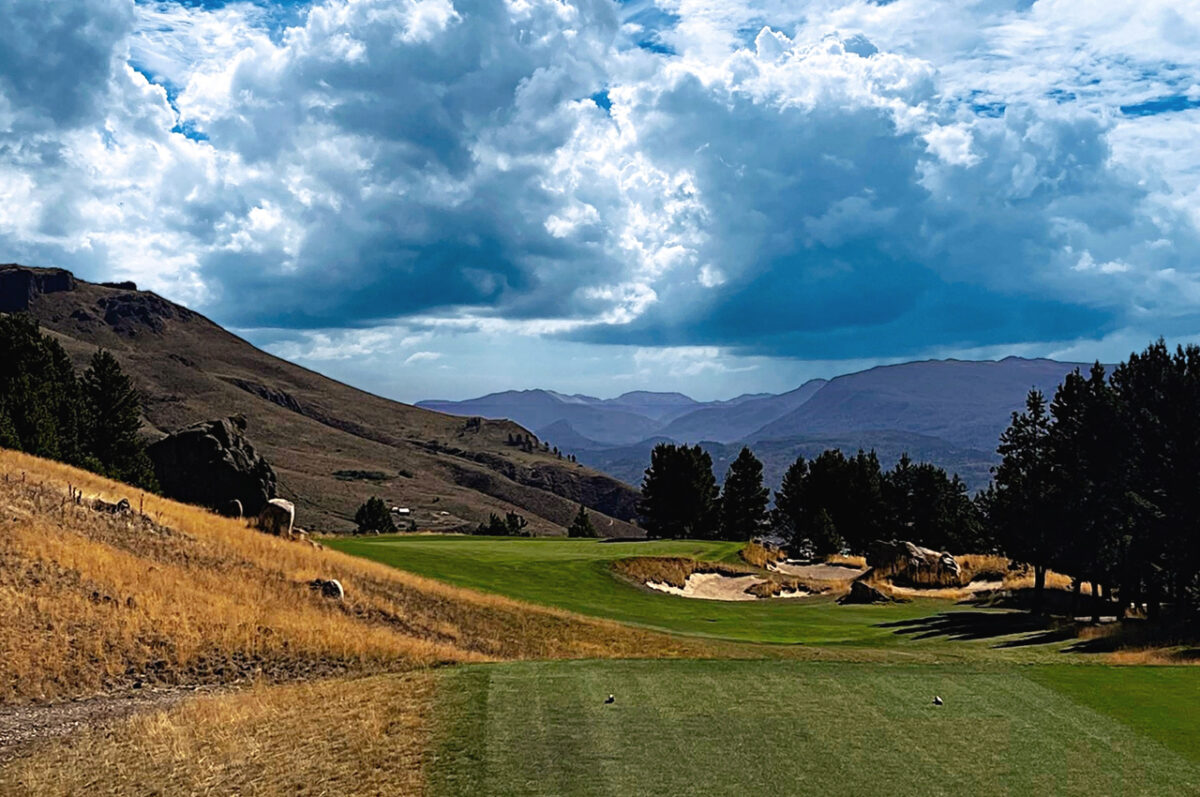MOROCCO – “You’re going where to play golf?”
That was a frequent response when a lucky group of Golfweek’s Best raters told friends about their next golf trip. The surprise was due to the fact that people just don’t think about going to Morocco for golf – at least not most Americans. But they’re oh so wrong. The country known for minarets and tagines, camels and Rick’s Café also has some incredible golf courses.
Near the end of 2023, 26 Golfweek’s Best raters from across the United States disembarked in Casablanca and headed to Rabat, the garden city of Morocco and home to King Mohammed VI. After a welcome dinner at the sumptuous Villa Mandarine set in an orange grove and a good night’s sleep, the group headed to the famous Royal Dar Es Salam golf courses to play the Blue the first day and the Red the second.
The Blue course, designed by Robert Trent Jones Sr. in 1974, offers a variety of hole designs. Trees and brambles narrow the fairway, and the greens are often behind doglegs and fairway turns.
A bus tour of the city followed golf and provided a glimpse of the Royal Palace, the Mausoleum of Mohammed V and the Kasbah of the Udayas. Delicious tagine dinners awaited the group at various local restaurants.

The Red course at Royal Dar Es Salam, located in the heart of a cork oak forest, meanders through more than a thousand acres of trees, flowers and water. This Jones Sr. masterpiece is a par 73, and almost all holes are surrounded by bunkers from mid-fairway to the greens. The ninth hole is located in the center of a large lake topped with water lilies.
After our tour bus loaded up all the golf bags and luggage, we were off to Marrakech – a four-hour ride. The Sofitel Marrakech hotel in the heart of the city offered breathtaking views of the indoor pool and garden, palm trees, bougainvillea and the Atlas Mountains. Our welcome dinner of tagines and other Moroccan dishes concluded with a beautiful and delicious chocolate dessert while we listened to a Moroccan musical group.
The Al Maaden Golf Resort hosted the group for our first of three Marrakech golf rounds. American architect Kyle Phillips combined the spirit of a Moroccan oasis with a Scottish touch. The course is inside the Al Maaden Sculpture Park, and 12 sculptures are positioned on and around the course. The unique artistic water feature on two of the holes blends into the terrain and offers a challenge off the tee and second shots.
The Safran Restaurant, which two groups of raters selected for the fantastic views and scrumptious cuisine, was empty when we arrived at 7:30, but by 9:00 every table was filled. That’s when we were surprised with music, belly dancers and Moroccan male dancers who were able to lure two of our raters into the aisle to dance with them. Who knew these otherwise mild-mannered group members were able to shake it with the locals?
The Assoufid Golf Club was one of the newer courses on the itinerary. The course winds through a naturally undulating desert landscape and has received several citations as among the best clubs in Morocco and Africa.
After golf, a three-hour walking tour familiarized the group with the Secret Garden, Ben Youssef Madrassa and the main square and souks. Our last dinner in Marrakech was set in the beautiful Red House located in the chic Hivernage area in front of the walls of the Medina. The luxurious dining area had incredible tiled walls, arches and columns with beautiful drapes and chandeliers. The chef prepared delicious couscous dinners accompanied by wine. Morocco is a former French protectorate, and one can thank the French for the wines throughout the trip that were quite drinkable, as was the Casablanca brand beer.
Our last course in Marrakech was the Old Course at Royal Golf Marrakech. One of the most senior layouts in the country, it was inaugurated in 1927 as a four-hole course for the personal use of El Haj T’hami el Mezouari el Glaoui and expanded to nine holes the following year. The current design weaves through some 15,000 Aleppo pines, eucalyptus, palm, orange and olive trees. The course was remodeled in 1933 by French professional Arnaud Massy, the first non-British winner of the Open Championship in 1907. Extended to 27 holes in 2007 by Thierry Sprecher, it is a charming old layout played by such golfers as Winston Churchill, David Lloyd George and Dwight D. Eisenhower.
After golf and a delightful lunch on the patio of the clubhouse, we boarded our bus for Taghazout Bay and the coastal town of Agadir. Popular as a vacation spot and retirement home for Europeans and Brits, the views from the hotel and most holes on the golf course were breathtaking and a dramatic contrast to the city locations of our previous stops.
The Tazegzout Golf Club, with a course designed by Kyle Phillips, opened in 2014. The routing meanders through natural Argan vegetation with deep rocky ravines and along a 260-foot cliff on the final three holes. The views of the Atlantic and the small fishing village were spectacular, and each hole offered a different challenge. This was definitely one of the favorite tracks of the group. Most unusual were the packs of dogs that roamed the course (sometimes playing on the greens with a golf ball recently hit by one of our raters), supposedly to keep away other unwanted animals.

The little fishing village offered great restaurants with amazing fish entrees and views of the Atlantic.
By now we had mastered the on-again-off-again loading and unloading of the bus, and our final leg took us to the Agadir Al-Massira International Airport for a short flight to Casablanca and Mazagan Beach and Golf Resort. The 462-room, Moorish-style resort built around a beautiful pool area had everything you might want for a longer stay: restaurants, bars, casino, night club, spa and fitness center and a variety of other leisure activities.
The resort is on the Atlantic, and fog delayed our morning tee times unless you wanted to play blind, which a few groups chose to do. This Gary Player-designed course was the most “American” and offered golf with a view on almost every hole. The longest course in North Africa at 7,532 yards requires players to stay in the fairway, as ice plants line the fairways and gobble up any errant shots. With lush greens and immaculate fairways, it’s golf played to the sound of waves rolling onto the beach. The final three holes parallel the ocean and make for a memorable golf experience.
Our farewell dinner at the Bushra by Budha-Bar, curated by renowned chef Joe Barza, served an endless number of mezze dishes before the main course that included a variety of tagines. A Moroccan band played wonderful electric string instruments as our group enjoyed its final meal together.
Someone might ask, “Ashno ban lik?” Which in Moroccan means, “What do you think?” I believe all of us would say in English, “It was an incredible experience.”





